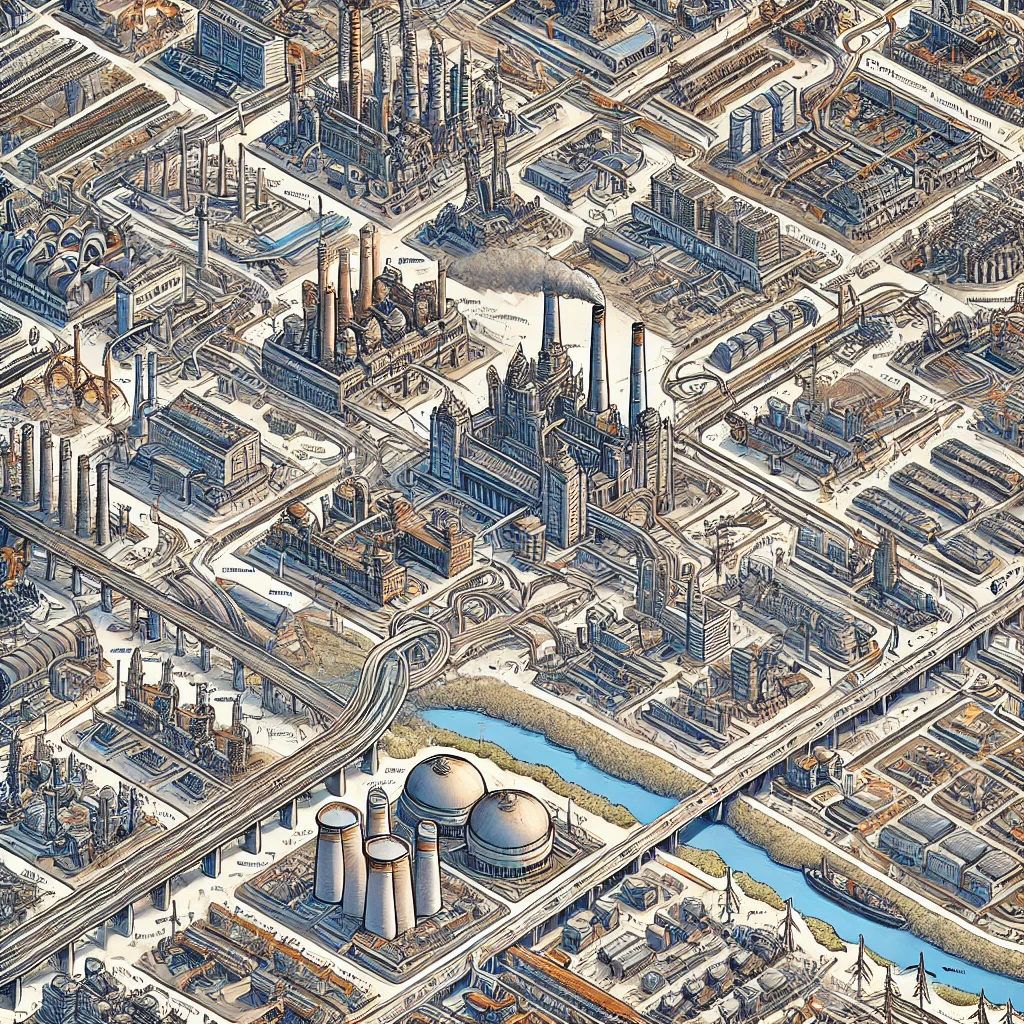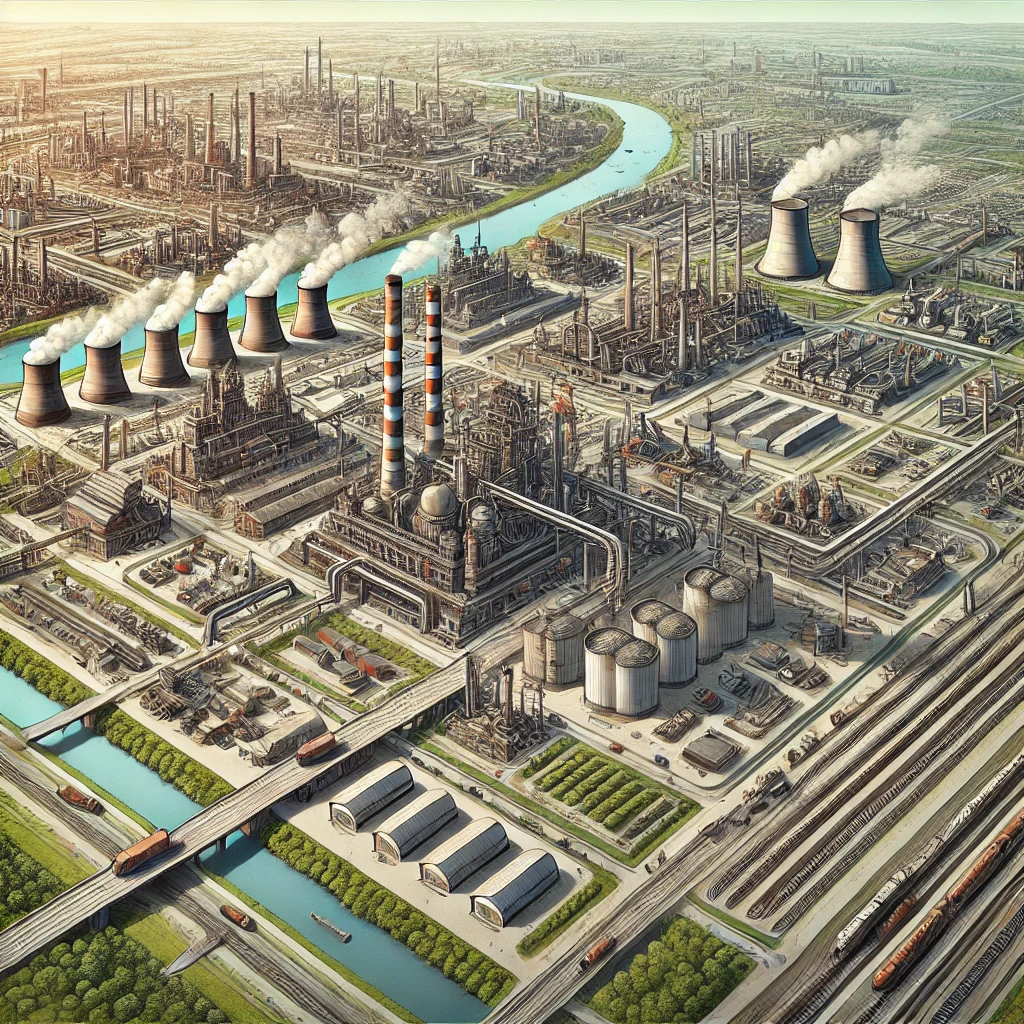

The Major Industrial Regions of India are crucial to the country’s economy. These regions house a wide range of industries, including textiles, chemicals, and engineering. The distribution of natural resources, transportation facilities, and skilled labor has shaped India’s industrial development. Understanding the Major Industrial Regions of India is vital to grasp the economic geography of the nation.


The 8 Major Industrial Regions of India are pivotal for understanding the distribution of industrial activities across the country. These regions highlight where manufacturing, mining, and other industrial activities are concentrated, driving the country’s economic engine forward.
This region is a major industrial hub with a focus on textiles, engineering, chemicals, and electronics. Mumbai, as a port city, provides excellent access to international markets, while Pune has become a center for the automobile and IT industries. The region benefits from well-developed infrastructure, a skilled labor force, and proximity to educational institutions, making it a key contributor to India’s industrial output.
The National Capital Region (NCR), encompassing Delhi and surrounding areas, is a diverse industrial zone with a strong presence in IT, automobiles, electronics, textiles, and consumer goods. Its strategic location in North India, well-connected transportation networks, and proximity to political and financial centers make it an attractive destination for various industries. The region also benefits from a large consumer base and skilled workforce.
Gujarat is known for its robust industrial base, particularly in petrochemicals, textiles, and pharmaceuticals. The state’s industrial growth is supported by its extensive coastline, which facilitates trade, and its well-developed infrastructure, including industrial estates and special economic zones (SEZs). Gujarat’s business-friendly policies and access to natural resources like crude oil and cotton further strengthen its industrial sector.
This southern industrial corridor is known for its automobile manufacturing, IT services, textiles, and heavy engineering industries. Chennai is a major automobile hub, hosting manufacturing plants for global auto giants, while Bengaluru is renowned for its IT and electronics industry. Coimbatore is a key center for textiles and engineering goods. The region’s industrial growth is driven by a skilled workforce, strategic location, and strong educational institutions.
Historically known for its jute and textile industries, the Kolkata-Hooghly region has diversified into engineering, IT, and electronics. The region benefits from its riverine location, which provides easy access to inland and coastal shipping routes. The presence of large public sector units and a well-established transportation network further supports its industrial activities.
Hyderabad has emerged as a major industrial center, particularly in the fields of pharmaceuticals, biotechnology, and IT. Known as “Cyberabad,” the city is home to several multinational companies and research institutions. The region’s industrial growth is supported by government initiatives, modern infrastructure, and a strong educational ecosystem, making it a key contributor to India’s knowledge-based industries.
Located in eastern India, this region is rich in mineral resources, including coal, iron ore, and bauxite. It is a significant center for the steel, heavy engineering, and mining industries, with major industrial cities like Jamshedpur and Ranchi. The availability of raw materials and energy resources drives the region’s industrial development, making it a crucial part of India’s manufacturing sector.
This coastal region in Andhra Pradesh is growing as an industrial hub with a focus on shipbuilding, petrochemicals, IT, and agro-based industries. Visakhapatnam, with its deep-water port, is a key center for maritime industries, while Guntur is known for agriculture and related industries. The region’s industrial growth is supported by government initiatives, special economic zones, and excellent port facilities.
Industrial regions play a crucial role in the economic development and overall progress of a country. They are not just centers of production but also hubs of innovation, employment, and infrastructure development. Here are some key reasons why industrial regions are important:
The Major Industrial Regions of India form the backbone of the nation’s economy. Understanding these regions helps us appreciate India’s industrial landscape. Each region plays a critical role in India’s industrial sector, from Mumbai-Pune to Punjab. The 8 Major Industrial Regions of India are not just centers of production but also symbols of India’s growth and progress.
| UPSC Notes |
| 1. Major industrial regions in India include Mumbai-Pune, Delhi-NCR, Gujarat, Chennai-Coimbatore-Bengaluru, Kolkata-Hooghly, Hyderabad, Chhota Nagpur, and Visakhapatnam-Guntur. 2. Each region specializes in different industries, contributing significantly to India’s GDP and economic growth. 3. These regions drive urbanization, infrastructure development, and technological advancements, enhancing overall living standards. 4. Industrial regions create employment opportunities, both directly in industries and indirectly in supporting sectors like logistics and services. 5. The strategic location of these regions, such as proximity to ports or mineral resources, plays a crucial role in their industrial success. |
Minilateralism is transforming the global diplomacy as it introduces smaller, targeted partnerships in order to…
India’s GDP Growth Forecast Revised Downwards by RBI The Reserve Bank of India (RBI) on…
India is losing its opportunities to sustain agriculture due to severe soil degradation. Recent studies…
India’s Economic Growth Outlook Revised The Reserve Bank of India (RBI) has brought down India's…
Startup Ecosystem in India has emerged as a global leader, with over 140,000 recognized startups…
India’s GDP Growth Forecast Revised by RBI The Reserve Bank of India had trimmed its…